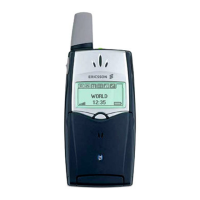AT Commands Phone Terminal Terminated 22
4.2.1 Commands
ATA Answer Incoming Call Command
ATH Hook Control
ATD Dial Command
ATL Monitor Speaker Loudness
4.2 Ensemble C3: Call Control
Description: Answers an incoming call.
Execution command: ATA
Description: Terminates an active call.
Execution command: ATH
Description: Causes the phone to dial a call.
All characters appearing on the same command line after the “D” are considered part of
the call-addressing information to be signalled to the network, or modifiers used to
control the signalling process (collectively known as a “dial string”), up to a semicolon
character or the end of the command line. The DCE dials the voice number to
complete the call, returns to the on-line command state, and sends an OK final result
code.
Any characters appearing in the dial string that the DCE does not recognise as a valid
part of the call-addressing information or as a valid modifier is ignored. This permits
characters such as parentheses and hyphens, that are typically used in formatting of
telephone numbers, to be included.
Execution command: ATD<dial_string>;
Parameter:
<dial_string>: Valid characters: ‘0-9, #’
Possible responses:
NO DIALTONE The line is busy.
ERROR If ATD is unsuccessfully executed by the phone.
NO CARRIER The mobile phone is not registered.
Description: This command controls the volume of the monitor speaker.
Set command: ATL=[<value>]
Read command: ATL? Displays the current <value> setting.

